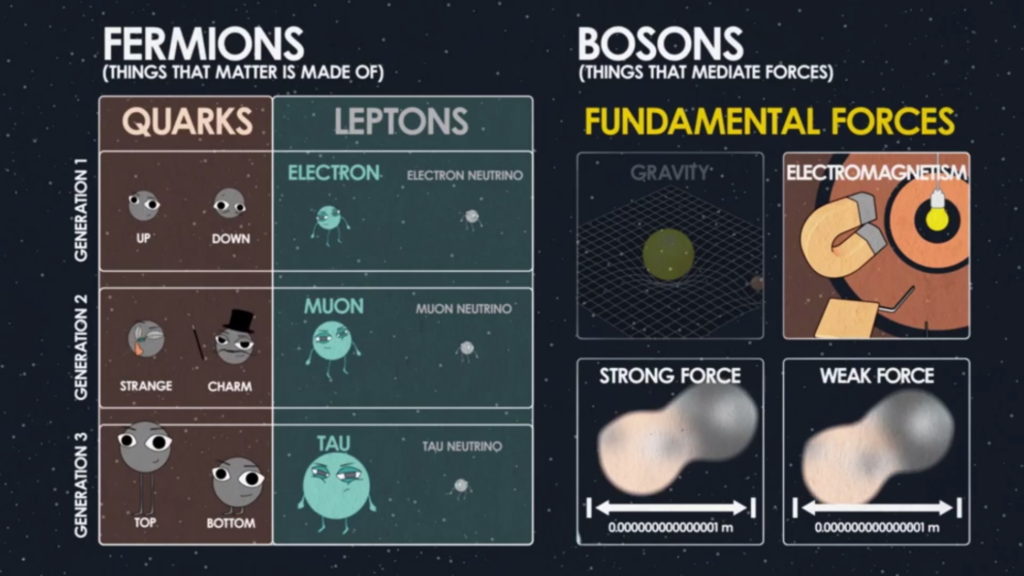The core of a neutron star is such an extreme environment that physicists can’t agree on what happens inside. But a new space-based experiment — and a few more colliding neutron stars — should reveal whether neutrons themselves break down.



A supermassive dark opening isn’t the best place to live. Notwithstanding, there are physicists who think about existence existing in such outrageous spots and likely effectively occupied by some most progressive races – super outsiders. “Insides of super gigantic dark openings might be occupied by cutting edge human advancements living on planets with the third-kind circles,” Russian cosmologist Vyacheslav I. Dokuchaev at Moscow’s Institute for Nuclear Research of the Russian Academy of Sciences writes in his paper distributed in Cornell University’s online diary arXiv. “We could live inside a super gigantic dark gap in the long run… yet super-outsiders may have effectively outsmarted us,” claims Dokuchaev. His dubious hypothesis did not depend on sci-fi yet on Einstein’s speculations.
Physicists theorize that a new “traversable” kind of wormhole could resolve a baffling paradox and rescue information that falls into black holes.

The fifth observation of gravitational waves (GW) marks the beginning of a new era in astronomy. On August 17, 2017, the LIGO and VIRGO collaborations detected neutron stars merging for the first time and immediately alerted observatories around the world. In a matter of minutes the event had been located, another first for GW astronomy, and telescopes around the world begun studying it almost immediately.
The event observed, called GW170817, was produced in galaxy NGC 4993, located 130 million light-years from Earth. The gravitational signal was the strongest ever observed, lasting over 100 seconds, and it emitted a gamma-ray burst (GRBs), providing the first piece of evidence that GRBs are produced by neutron star collisions. It also provided the strongest evidence yet that neutron star mergers are responsible for the creation of the heaviest elements in the universe, like gold and platinum.
The importance of this observation cannot be understated. We are witnessing Galileo pointing the telescope up, or Henrietta Swann Leavitt working out the relation that will be used to measure cosmic distances. This observation brings a completely new dimension to astronomy. The seven papers published in Nature, Nature Astronomy, and Astrophysical Journal Letter are also record-breakers. They have over 45,000 authors – around 35 percent of all active astronomers in the world – who worked at the over 70 observatories that helped to make this discovery.


I don’t feel any different being 77 years old, though I know I’m not going to be here forever. On a day-to-day basis, I still write papers, solve physics problems and interact with other physicists. I may be the only one in the world that doesn’t know that I’m senile, but I continue to contribute to physics. The principle thing is that I am still having fun.
The next act: Life stories | A taste for life.

Do you remember all the hoopla last year when the Higgs Boson was confirmed by physicists at the Large Hadron Collider? That’s the one called the ‘God particle’, because it was touted as helping to resolve the forces of nature into one elegant theory. Well—Not so fast, bucko!…
First, some credit where credit is due: The LHC is a 27-kilometer ring of superconducting magnets interspersed by accelerators that boost the energy of the particles as they whip around and smash into each other. For physicists—and anyone who seeks a deeper understanding of what goes into everything—it certainly inspires awe.
Existence of the Higgs Boson (aka, The God Particle) was predicted. Physicists were fairly certain that it would be observed. But its discovery is a ‘worst case’ scenario for the Standard Model of particle physics. It points to shortcomings in our ability to model and predict things. Chemists have long had a master blueprint of atoms in the Periodic Table. It charts all the elements in their basic states. But, physicists are a long way from building something analogous. That’s because we know a lot more about atomic elements than the fundamental building blocks of matter and energy. [continue below image]
So, what do we know about fundamental particles the forces that bind them? HINT: There are 61 that we know of or have predicted and at least two about which we don’t yet have any clue: The pull of Gravity and dark matter / dark energy.
This video produced by the BBC Earth project is an actors’ portrayal of a news interviewer and a particle physicist. If we were to simply watch these two guys talk in front of a camera, it would be pretty boring (unless, of course, the physicist has charm and panache, like the late Richard Feynman or my own Cornell professor, Carl Sagan). So, to spice it up a bit, BBC has added a corny animation of two guys talking with an anthropomorphic illustration of cartoon particles. Corny? Yes! But it helps to keep a viewer captivated. And, for any armchair physicist, the story is really exciting!
See the video here. It takes a moment to load—but for me, the wait is worthwhile.
Will A.I. take us over, and one day look back on this time period as the dawn of their civilization? Richard Dawkins posits an interesting idea, or at the very least a premise to a good science-fiction novel…
When we come to artificial intelligence and the possibility of their becoming conscious we reach a profound philosophical difficulty. I am a philosophical naturalist. I am committed to the view that there’s nothing in our brains that violates the laws of physics, there’s nothing that could not in principle be reproduced in technology. It hasn’t been done yet, we’re probably quite a long way away from it, but I see no reason why in the future we shouldn’t reach the point where a human made robot is capable of consciousness and of feeling pain. We can feel pain, why shouldn’t they?
Despite sounding like the most egregious contradiction in physics, hot water appears to freeze faster than cold water under certain circumstances. The phenomenon can be traced back to Aristotle himself, but after centuries of experiments demonstrating this phenomenon, no one’s been able to explain it.
Now physicists are pointing to strange properties of hydrogen bonds as the solution to one of the oldest mysteries in physics — but others are claiming the so-called Mpemba effect doesn’t even exist at all.
For a bit of background into the Mpemba effect, this phenomenon has been confounding physicists since Aristotle first noticed it more than 2,000 years ago.
“Aging is a consequence of physics, not biology.” Dr. Aubrey de Grey believes that the aging of any machine with moving parents is fundamentally the same, whether that machine is alive or not. He states that the SENS Foundation doesn’t work on longevity and immortality — it works on health. “The only way we are going to live substantially longer is by staying truly youthful for substantially longer.”